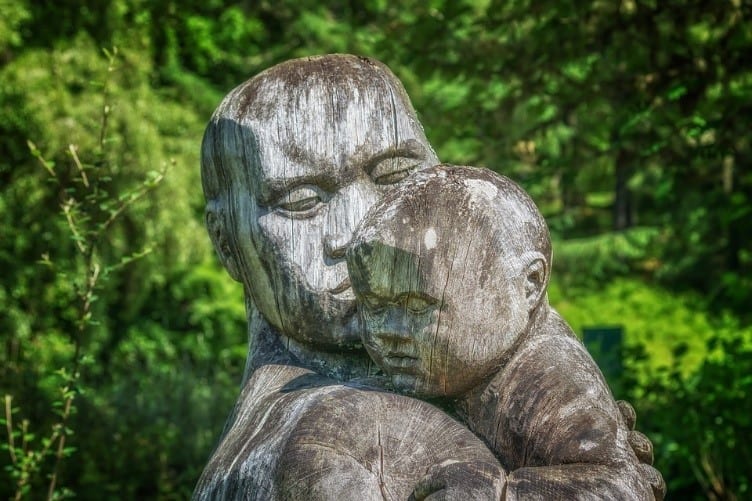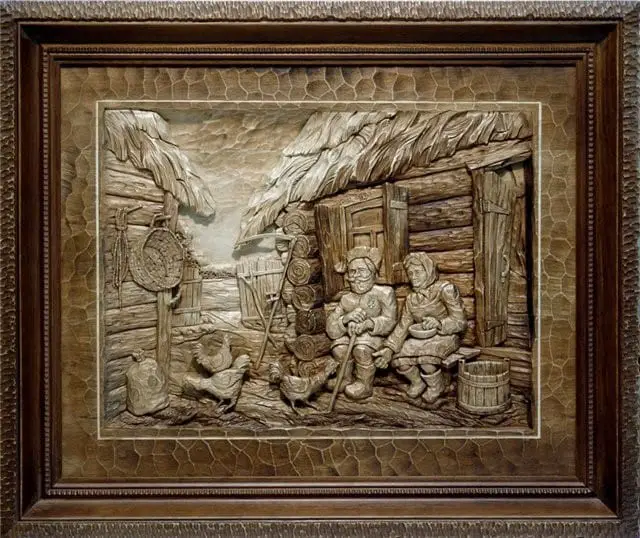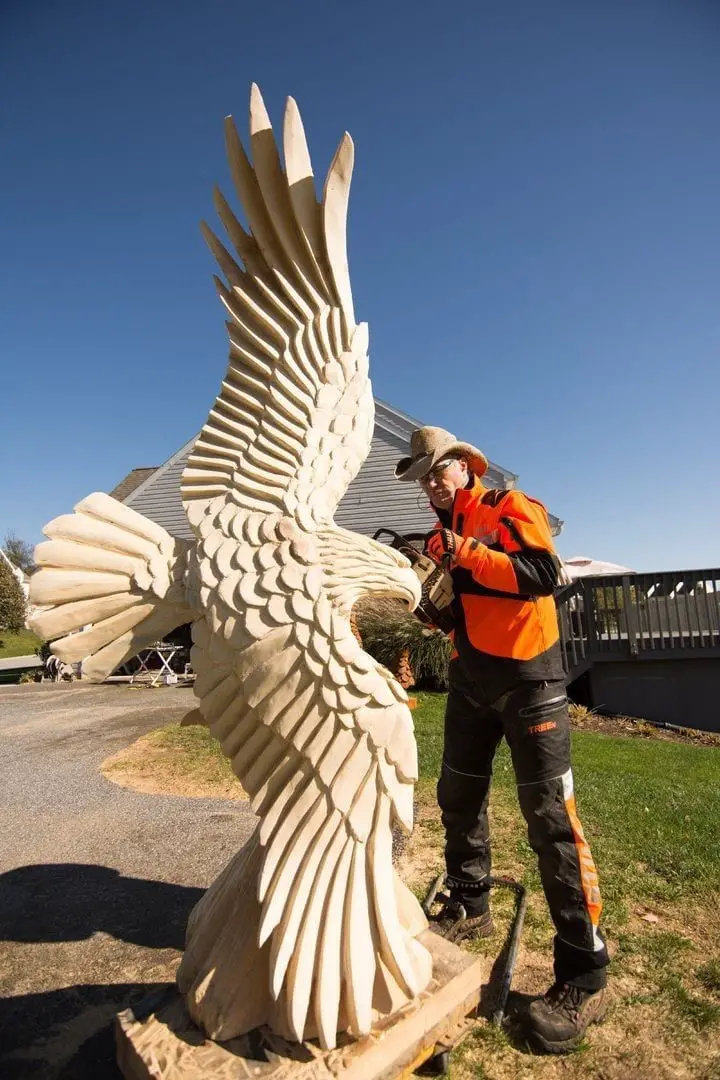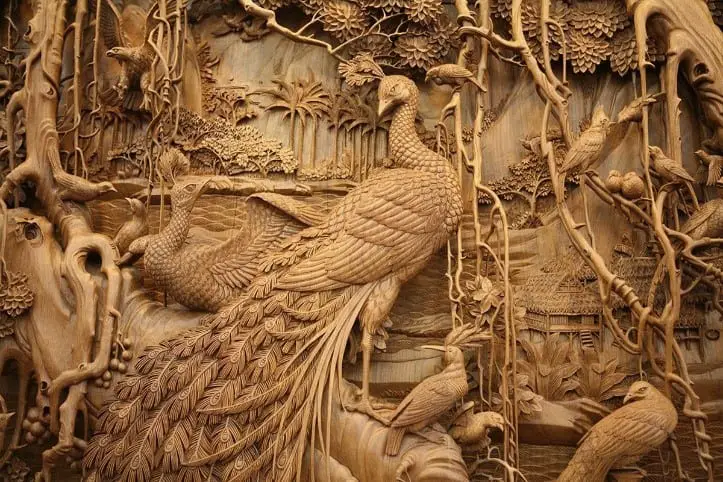According to Merriam Webster dictionary, wood carving is “the art of fashioning or ornamenting objects of wood by cutting with a sharp handheld implement.” Nevertheless, wood carving is also “an object of wood so fashioned or ornamented.” But how often do we actually get to think of the impact of wood carving to society?
From fashioning weapons, tools, totems, religious ornamentation on temples and palaces through constructing buildings and the miracle of starting a fire, wood has been, is, and will remain one of the most important materials in the development of humankind from ancient times to present-day.
In this article, we’ll dig into curious facts and in-depth research on our journey to discussing and revealing the tremendous impact of wood carving to society. Are you ready? Let’s jump in!
Stories from the Dawn of Mankind

Long before our ancestors had access to other precious materials, such as metal, wood was the most easily available, sustainable medium for the creation of much-needed weapons and tools.
And indeed, it’s only fair to state that wood is “the fore-front of the world’s industrial raw materials and it is the real wealth of nations” (Ogunsanwo et al., 2007).
Wood Carving from Africa to Egypt

Above all, if we get to look closer at the invaluable inheritance of wood carving, we can clearly see that wood is equally important when it comes to both the daily life, as well as significant events such as ceremonies or conquests.
To illustrate this better, we can take the example of the way carvers in Nigeria, Africa use the power of wood for the construction of wooden cooking tools (bowls, spoons, cups, dishes, among others), stools, drums, and masks.
But what’s more, wood carving has impacted the way the natives have fun through traditional games such as Ayo olopon.
In fact, the native people of Africa are not the only ones who have used the art of woodcarving for entertainment purposes.
The ancient Egyptian rulers also had access to special games – for instance, board games, that served the purpose of bringing relaxation after a tiring day, and these were also created by carving wood.
On another note, during the pre-colonial era, Ethiopians have crafted some of the most amazing weaponry.
Furthermore, traditional Ethiopian weaponry was not solely used for war purposes. Instead, these weapons were an essential part of various ceremonies, as well as grazing. And nonetheless, some were even used for prestige.
One of the unique Ethiopian weapons includes animal hide shields that were often intricately carved. But moreover, the unique process of making these shields involved the use ofwater that served to pound the wooden forms wet before the leather was initially dried and removed.
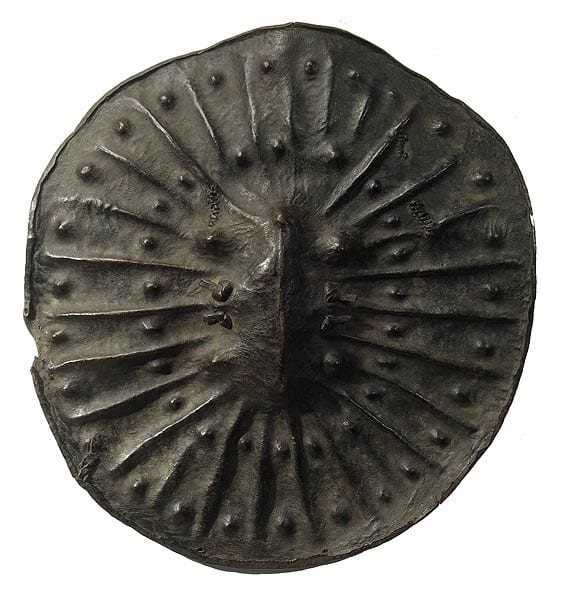
Furthermore, different tribes across Africa used different techniques for the creation of weapons and tools.
That turns the artifacts into invaluable cultural inheritance revealing ancient legends and stories about the lifestyle of the natives through the veil of time.
For instance, the Maasai tribe utilized a wooden frame in order to sew buffalo hide onto it. Finally, they would attach wooden handles at the very center of the back of the shield, and further wrap the handles with leather for a tighter, more secure grip.
It is more than simply incredible to learn from the customs and traditions of the natives anywhere around the world, and wood carving has marked our mutual history as part of the mankind in more than one meaningful way.
Interestingly, just several years ago the Russian photographer and traveler Olga Michi took members of the Maasai tribe who have never left their country all the way to Russia where they got to see snow for the very first time!
Ancient Polynesian Wood Carving
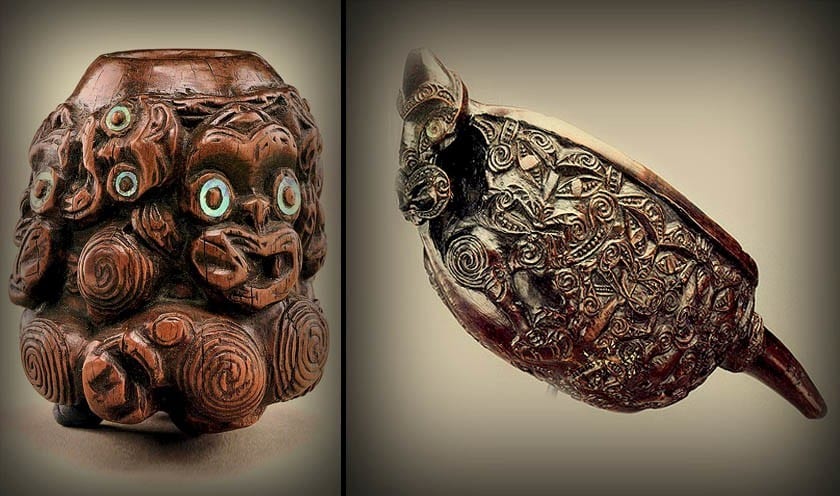
Now, let’s travel to another corner of the world – the ancient lands of Polynesia.
Thus, we can get to admire the skillful, ingenious way that the Maori people who inhabited the island of New Zealand, employed the art of woodcarving for the creation of incredible weapons that differ significantly from the weapons of ancient Africa.
Nevertheless, the explorers who reached the Polynesian islands centuries later were also fascinated by the Maori weapons.
For instance, the legendary British explorer – Captain James Cook, collected a stunning wooden club during his first visit to New Zealand. The year was 1769, and the wooden club – wahaika, was carved in the traditional style of Rongowhakaata carving.
The wahaika collected by James Cook and exhibited in the Auckland Museum, Photo by Don Hitchcock – Image Source
But what’s more, the impact of wood carving to the ancient Polynesian society was much greater than we can get to realize at the very first sight. Finely carved wooden objects were used during sacred ceremonial practices.
Probably one of the most impressive ways of employing the art of wood carving by the Polynesians can be seen in the elaborate details of the Maori meeting houses.
The Impact of Wood Carving in Terms of Spirituality
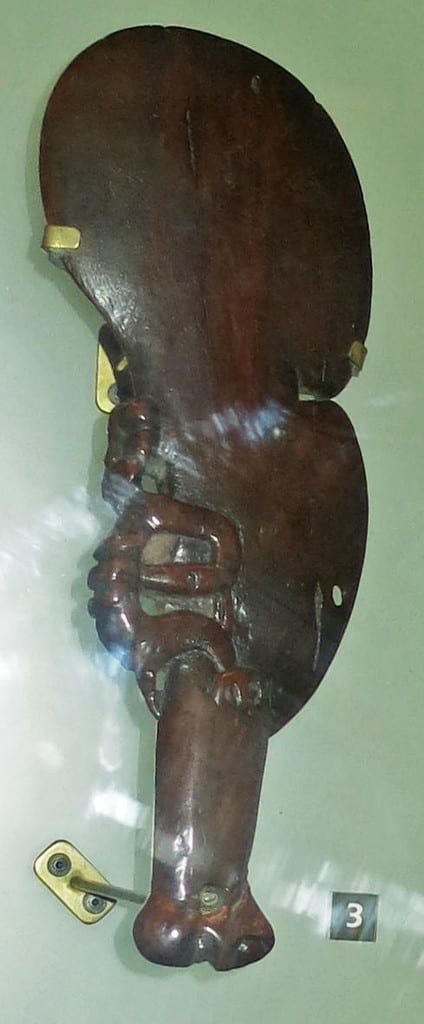
Certainly, the Maori meeting houses are an excellent example of the way wood carving is embedded in the most sacred spiritual beliefs of the ancient civilizations across the globe.
Specifically, there is one precious spiritual element that can be found through all the different cultures worldwide: masks.
But what’s even more impressive is the way that the art of wood carving is related to both the spiritual, as well as the religious beliefs of the nations around the world without any limits.
Regardless of the different religions, such as Hinduism, Buddhism, and Christianity, the impact of wood carving to society in terms of spirituality is equally relevant.
According to Oxford Dictionaries, the adjective spiritual is “relating to or affecting the human spirit or soul as opposed to material or physical things.” With this in mind, spirituality refers to the very soul of every human, or in other words – to the inner world we carry inside our minds and heads.
Thus, some people may be spiritual but not religious at all while others can combine together their religious and spiritual beliefs.
What’s incredible in the case of religion, spirituality, and the impact of wood carving to society is the thin, invisible thread that weaves through the different nations to point out to a single truth: that we are all children of this Universe, and age, race, or gender are nothing but labels that should not separate us.
Back to the incredible masks carved out of wood throughout the globe, we can admire the intangible cultural inheritance of masked dances, ceremonies, and other rituals in Africa, Oceania, Europe, and all the way to North America.
The Silent Wisdom of Wood Carving: The Sanctuary of Truth

The Sanctuary of Truth is a stunning example of preserving the ancient Thai history and culture that is deeply intertwined with the art of wood carving. Thus, the Thai millionaire Khun Lek Viriyaphant sponsored the building of the incredible wooden sanctuary that is located right on the beach of North Pattaya.
Reaching the impressive 100 meters in height, every single wood carving is made solely by hand within over 3 decades. The carvings serve the sacred purpose of transferring the ancient beliefs of the Eastern philosophy about life. Above all, the focus of the carvings tells the story of the perishability of the materialistic things in life vs. the immortal virtues of happiness and goodness.
Ultimately, both goodness and happiness are equally important for the people throughout the globe, melting the illusionary separation between the nations away as if by magic and reminding society of what is truly important in the journey we call Life.
The Victories & Challenges of the 21st Century

The Sanctuary of Truth is not merely a cultural inheritance that will be left behind for the next generations.
Instead, it is also an important attraction that helps to boost the economy of the country thanks to the large flow of tourists who wish to explore the rich Thai history. And this leads us straight to the very core of the impact of wood carving on the society in the 21st century.
Did you know that the export of various wood carved items is responsible for bringing approximately $ 100 million to the economy of Bali, Indonesia?
Nevertheless, according to analyses published by Research Gate, wood carving provides the mind-blowing 80% of all household cash income registered in South Africa?
On another note, wood carving is closely related to boosting tourism, giving positive feedback by attracting a large number of visitors to explore the unique local cultures.
Surprisingly (or not!) wood carving is also estimated to add “more value to wood than other uses.” To illustrate this better, Damar Island in Indonesia registers a double profit of wood carved spoons vs. sawn-timber sales.
However, various challenges are posed to the art of woodcarving and its impact on the modern-day life of people in the 21st century.
Firstly, large forest areas are affected by the ravages of deforestation, contributing to the negative changes in the climate, as well as the opting for illegal sources of wood in some regions.
Secondly, different trade barriers affect the wood carving economy adversely by limiting the export of finely carved objects outside the borders of the countries. Nevertheless, the master wood carvers often end up earning much less from their hard and dedicated work than the third-party retailers do.
Unfortunately, a big part of the impact of wood carving on society is still trapped in the so-called grey sector.
The Takeaway
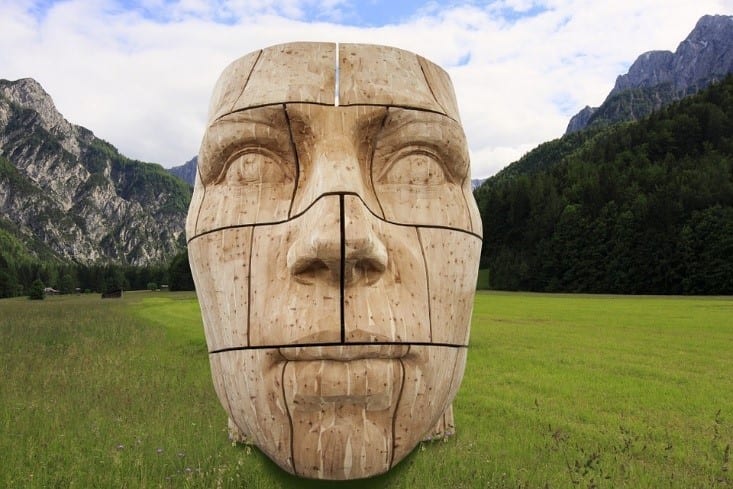
Discussing the impact of wood carving on society is a vast topic that is actually hiding much more nuances than what meets the eye at the very first sight.
From the fantastically decorated ships of the Vikings through the ingenious weaponry of African and Polynesian tribes and all the way to every corner of the world, wood carving is intricately connected with the history of mankind.
Up-to-date, we have the mission to preserve the ancient wood carving techniques from oblivion. But moreover, we are currently writing the new history of wood carving. However, we are also faced with the need for more stable and reliable government support in the wood carving sector.
“Wood is universally beautiful to a man. It is the most humanly intimate of all materials,” as wisely captured by Frank Lloyd Wright.
In a world where technology and science are developing faster than ever before, we are on the quest to evaluate better the impact of wood carving to society; for “Life can only be understood backward but it must be lived forwards” – Soren Kierkegaard.
